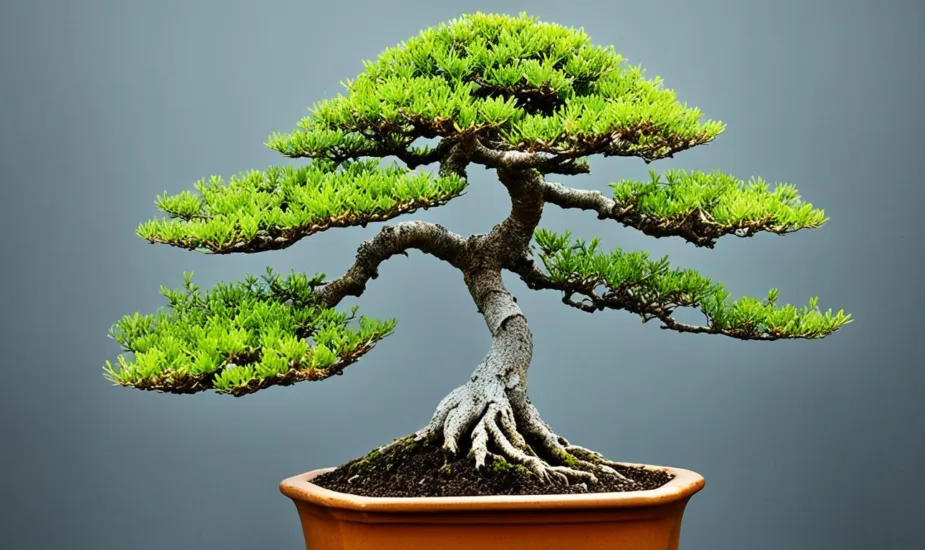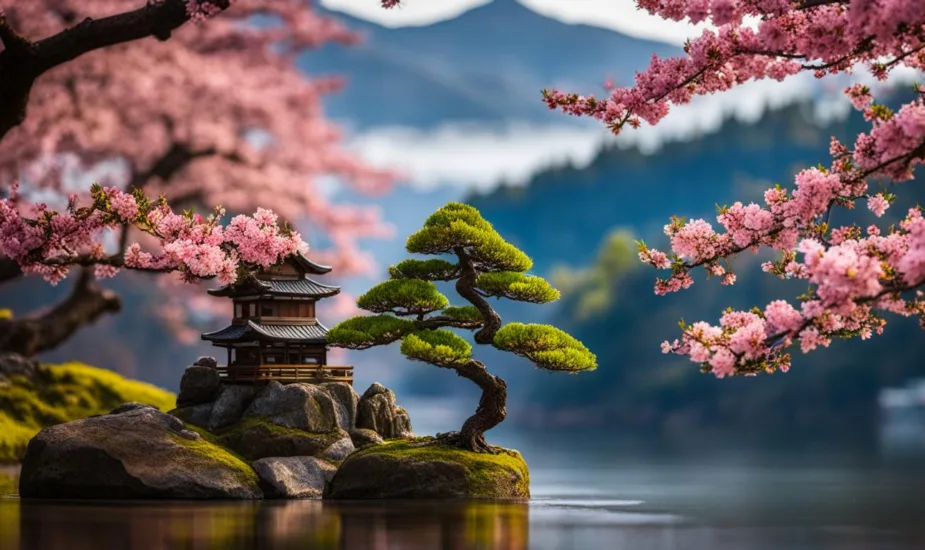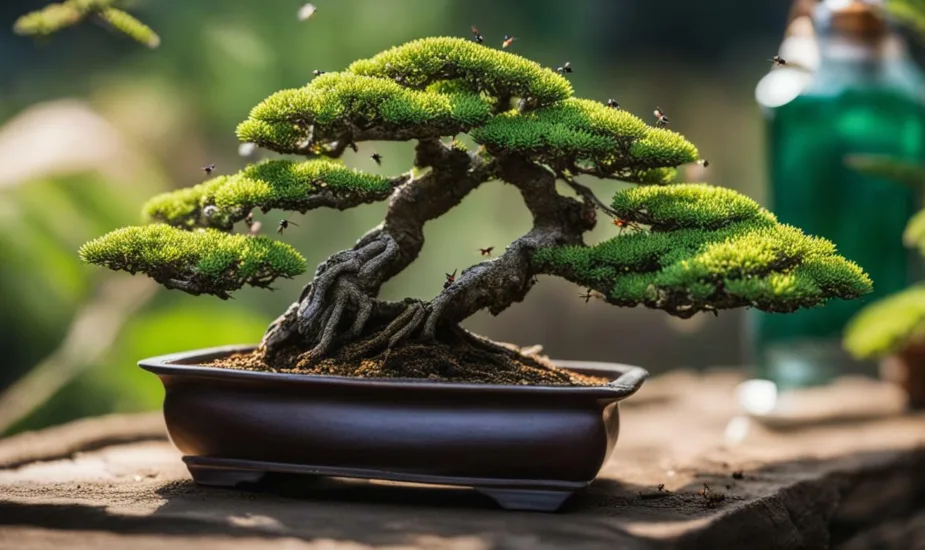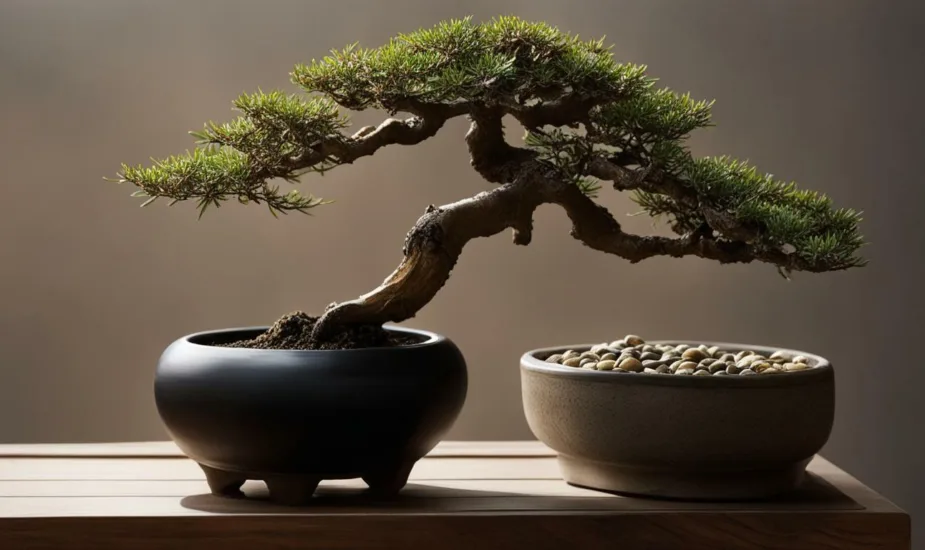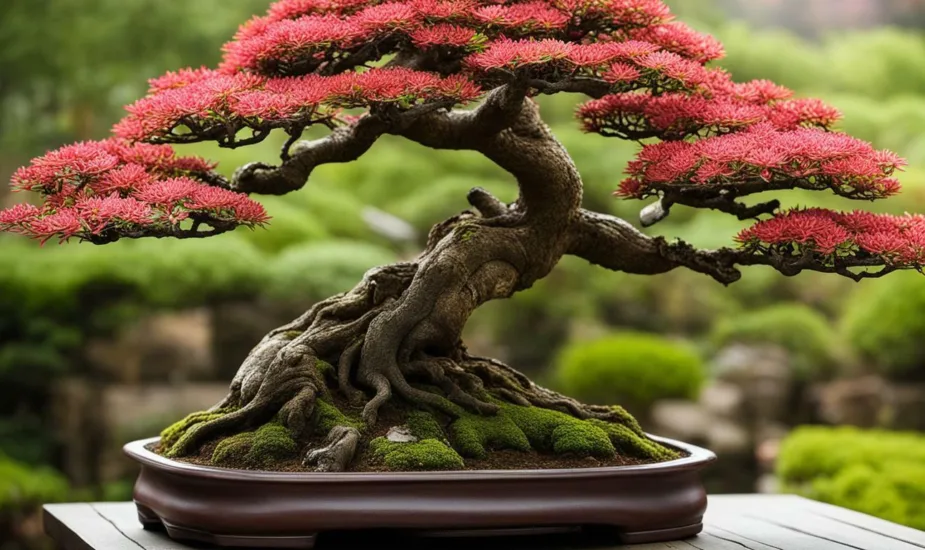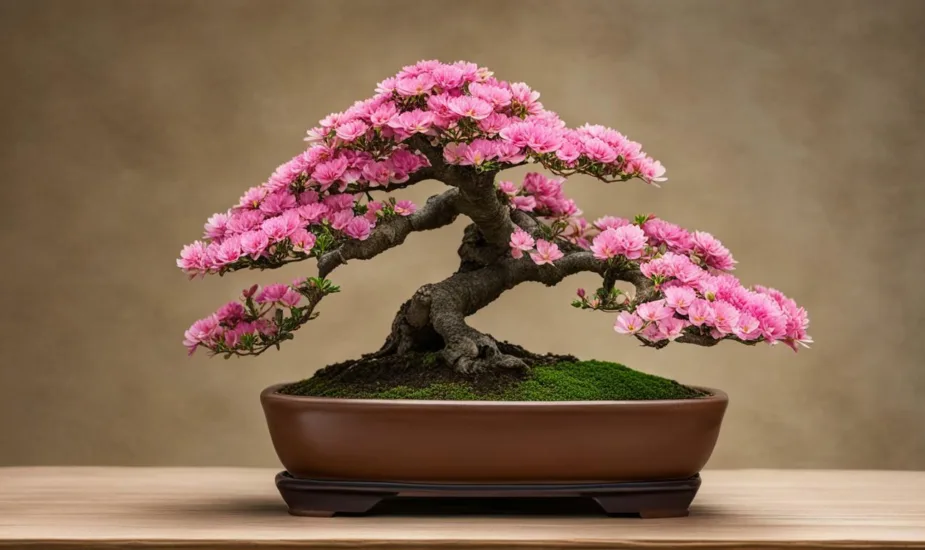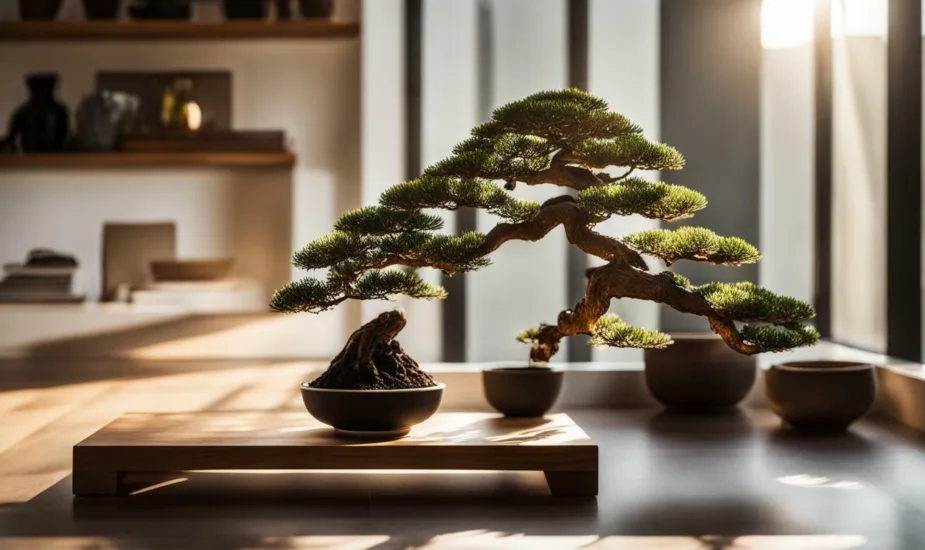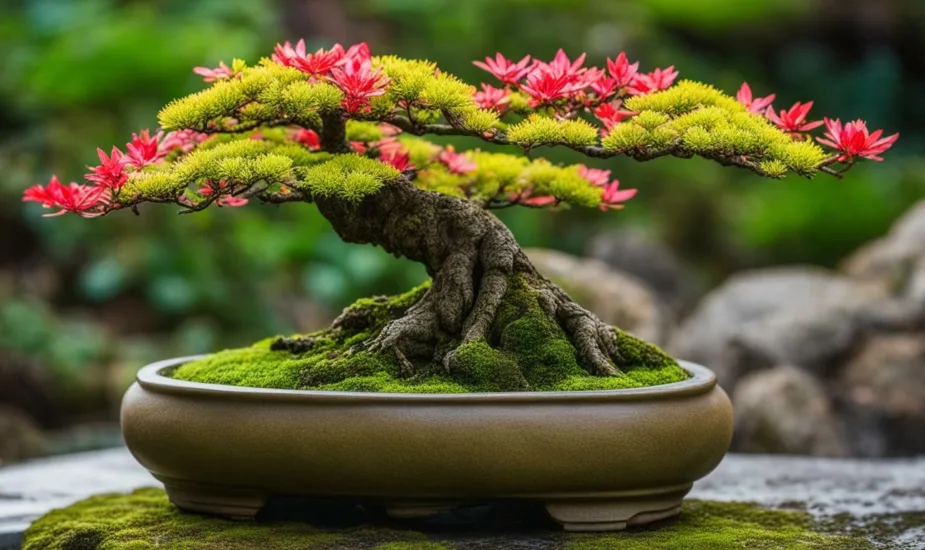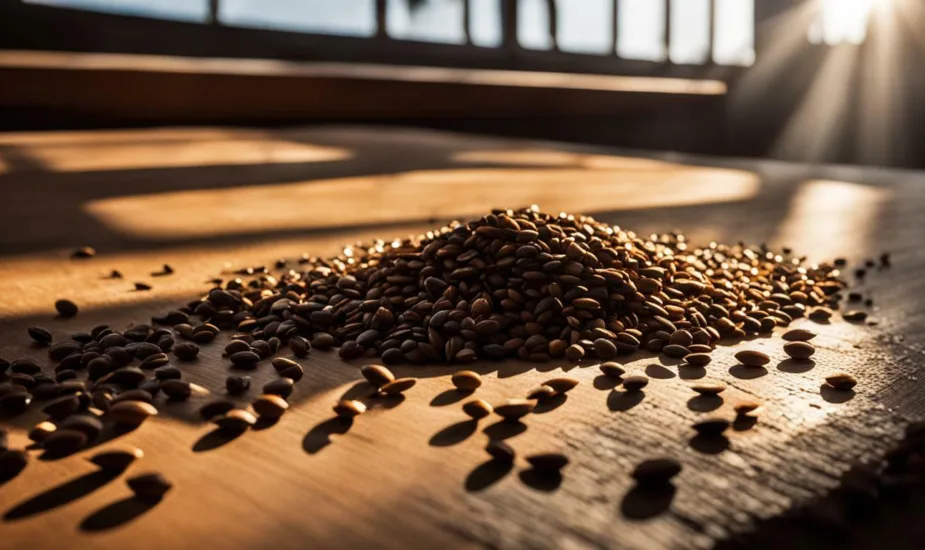Do Bonsai Trees Like Humidity? Uncover the Secret Now!
Bonsai trees thrive under specific conditions, and understanding their preference for humidity is essential for their well-being.

This article will delve into the relationship between bonsai trees and humidity, exploring the impact of humidity on their health and care requirements.
Key takeaways:
- Bonsai trees, especially tropical and subtropical species, require high humidity levels to flourish.
- Indoor bonsai trees face challenges in maintaining adequate humidity due to lower light intensity and dry indoor conditions.
- Increasing humidity for bonsai trees can be achieved by placing them in a bright location, using artificial lighting if needed, and employing techniques such as humidity trays and misting.
- Watering bonsai trees when the soil appears dry and regular fertilization during the growing season are crucial for their well-being.
- Understanding and maintaining the optimal humidity levels for bonsai trees is vital for their overall health and longevity.
Maintaining Humidity for Bonsai Trees: Tips and Best Practices
To ensure the well-being of your bonsai trees, it is crucial to maintain the necessary humidity levels, especially for indoor varieties. Bonsai trees, particularly tropical and subtropical species like the Ficus Bonsai, thrive in higher humidity environments.
Indoor bonsai trees often struggle to maintain the required humidity levels due to lower light intensity and dry indoor conditions. However, there are several effective ways to enhance humidity and provide the optimal environment for your bonsai trees.
1. Placing your Bonsai in a Bright Location
Position your bonsai tree in a bright area, preferably near a south-facing window. This allows the tree to benefit from natural sunlight, which not only aids in growth but also enhances humidity levels. If natural light is insufficient, you can supplement it with artificial lighting to maintain the necessary brightness for your bonsai.
2. Using a Humidity Tray
A humidity tray is a simple yet effective tool for increasing humidity around your bonsai tree. Fill the tray with water and place your bonsai on top of it, ensuring that the base of the pot is not submerged. As the water evaporates, it creates a humid microclimate around the tree, which is particularly beneficial for indoor bonsai trees.
3. Regular Misting
Misting your bonsai tree a few times a day can provide a quick boost of humidity. Use a spray bottle filled with water and mist the tree, paying attention to the leaves, branches, and the soil surface. However, make sure not to over-mist, as excessive moisture can lead to fungal diseases and other issues.
4. Air Circulation
Incorporating fresh air into your bonsai’s environment can help maintain an optimal humidity level. Open a window during the day to allow air circulation, but ensure that the bonsai is not exposed to drafts or extreme temperature fluctuations.
5. Watering and Fertilizing
Proper watering is crucial for maintaining humidity levels and overall bonsai health. When the soil appears dry, water the tree thoroughly until the excess water drains from the bottom of the pot. Additionally, regular fertilization during the growing season provides essential nutrients to the bonsai, promoting healthy growth and enabling it to better withstand humidity fluctuations.
By following these tips and best practices, you can create a favorable environment for your bonsai trees, promoting their growth and ensuring their well-being. Remember that different bonsai species may have varying humidity requirements, so it’s important to research and understand the specific needs of your tree to provide the optimal care it deserves.
| Key Points | Benefits |
|---|---|
| Place bonsai in a bright location | – Enhances growth |
| Use a humidity tray | – Creates a humid microclimate |
| Regular misting | – Provides a quick boost of humidity |
| Air circulation | – Maintains optimal humidity levels |
| Proper watering and fertilizing | – Supports bonsai health and growth |
Enhancing Humidity for Bonsai Trees: Techniques and Strategies
There are several effective techniques and strategies to enhance humidity for your bonsai trees, ensuring their optimal growth and vitality. One method is to use a humidity tray, which consists of a shallow tray filled with water. By placing your bonsai tree on the tray, the water evaporates and increases the humidity around the tree. This is particularly useful for indoor bonsai trees that struggle to maintain the necessary humidity levels in dry indoor conditions. Remember to monitor the water level in the tray and refill it as needed to maintain consistent humidity.
Misting is another simple yet effective way to increase humidity for your bonsai trees. Using a spray bottle, gently mist the foliage and branches of the tree a few times a day. The fine mist settles on the leaves, providing moisture and raising the humidity in the immediate vicinity. Be careful not to over mist, as excessive moisture can lead to fungal diseases. Aim for a fine mist that lightly coats the leaves without leaving them dripping wet.
Circulating air from outside can also help improve humidity levels for your bonsai trees. Opening a window during the day allows fresh, humid air to enter the room and circulate around the trees. This can be especially beneficial in areas with higher humidity levels. However, be mindful of temperature and drafts, as extreme conditions can harm your bonsai. Ensure that the window is closed during colder or excessively hot weather, and provide adequate protection from strong winds.
Summary:
- Use a humidity tray to increase humidity levels for indoor bonsai trees.
- Mist the foliage of your bonsai tree a few times a day to provide additional moisture.
- Open a window during the day to circulate fresh, humid air from outside.

| Technique | Advantages | |
|---|---|---|
| Humidity tray | – Easy to implement | – Provides consistent humidity |
| Misting | – Directly hydrates leaves | – Increases humidity quickly |
| Window circulation | – Access to natural humidity | – Improves overall air quality |
Conclusion
Maintaining proper humidity levels is crucial for the health and vitality of bonsai trees. Bonsai trees, especially tropical and subtropical species like the Ficus Bonsai, thrive in high humidity environments. However, indoor bonsai trees often struggle to maintain the necessary humidity levels due to lower light intensity and dry indoor conditions. Thankfully, there are several practical tips and techniques you can implement to enhance humidity and ensure the well-being of your bonsai specimens.
Firstly, it is essential to provide your bonsai tree with a bright location, preferably near a south-facing window, to maximize light exposure. In cases where natural light is insufficient, you can supplement it with artificial lighting to ensure the tree’s health. Additionally, placing the bonsai on a humidity tray filled with water can provide a consistent source of moisture in the surrounding air, increasing the humidity around the tree.
Misting the bonsai tree a few times a day is another effective way to maintain humidity levels. By lightly spraying water on the foliage, you can mimic the misty conditions that bonsai trees enjoy in their natural habitats. However, avoid excessive misting, as it can lead to fungal diseases if the foliage remains damp for extended periods.
Lastly, circulating air from outside can help improve humidity levels. Opening a window during the day allows fresh air to enter your indoor space, which can be beneficial for maintaining the moisture content in the air. However, ensure that your bonsai tree is not exposed to drafts or extreme temperature changes, as this can be detrimental to its health.
Remember to monitor the moisture levels of the soil, and water your bonsai tree when the soil appears dry. During the growing season, regular fertilization is also crucial to provide essential nutrients for the bonsai’s development.
By incorporating these tips and techniques into your bonsai care routine, you’ll create an environment that promotes healthy growth and longevity for your bonsai specimens. With patience and dedication, you’ll be rewarded with thriving bonsai trees that bring beauty and tranquility to your space.
FAQ
Do bonsai trees like humidity?
Yes, bonsai trees, especially tropical and subtropical species like the Ficus Bonsai, require high humidity levels to thrive.
How can I maintain humidity for bonsai trees?
To maintain humidity for bonsai trees, place them in a bright location near a south-facing window and use artificial lighting if needed. You can also place the bonsai on a humidity tray filled with water, mist the tree a few times a day, and circulate air from outside by opening a window during the day.
What are the best practices for enhancing humidity for bonsai trees?
Techniques to enhance humidity for bonsai trees include using humidity trays, misting the tree regularly, and ensuring proper watering and fertilizing practices.
Why is humidity important for bonsai tree health?
Humidity is important for bonsai tree health because it helps replicate their natural habitat and ensures proper hydration and growth. Adequate humidity levels also prevent the tree from drying out and becoming susceptible to diseases and pests.
 Little Garden Tips
Little Garden Tips




